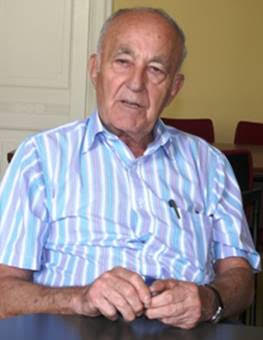
THE VOICE OF INTERNATIONAL LITHUANIA
|
VilNews has its own Google archive! Type a word in the above search box to find any article.
You can also follow us on Facebook. We have two different pages. Click to open and join.
|
Author Archive
Drunk as a skunk!
- Posted by - (0) Comment

By Barbara Isherwood
I thought I would share this with you all. What an exciting country Lithuania is!!
Yesterday evening, as I looked out of my dining room window, I noticed a lot of smoke. It was very close to a new house being built by one of the Iki brothers but behind a huge lilac tree so I could not properly see what the cause was.
I watched for a while and realised that the smoke was actually moving position. I knew I would not be happy until I had found out what was going on.
- Bookmark :
- Digg
- del.icio.us
- Stumbleupon
- Redit it
- Posted by - (0) Comment
How I came to Lithuania 21 years ago
Some private memories by Aage Myhre, VilNews Editor-in-Chief
aage.myhre@VilNews.com
1. Summer of 1990:
Landsbergis to Norway
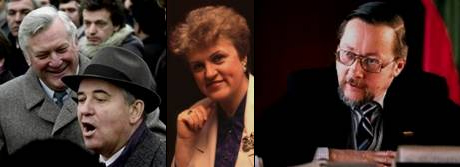
![]()
2. November 1990:
A Volga journey from Riga
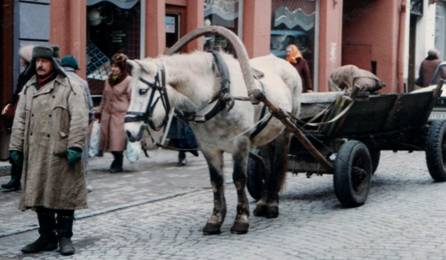
![]()
3. Nov 1990: Oil, a girl and a satellite system


![]()
4. January 1991:
Soviet rolls back
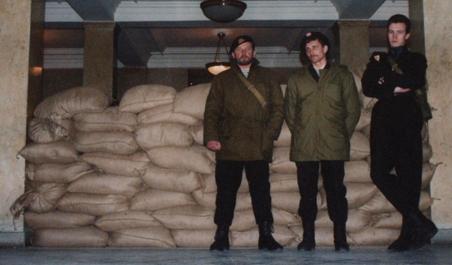
![]()
January 1991:
5. With Landsbergis behind barbed wire and homemade barricades
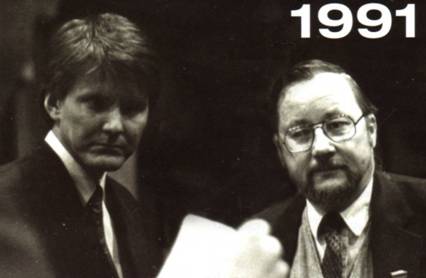
![]()
6. 1991: Oslo and Vilnius
become twin cities
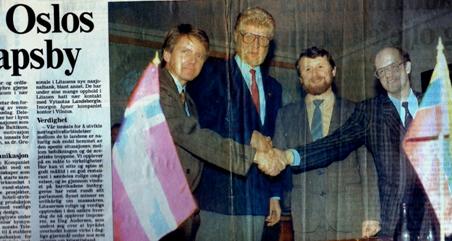
- Bookmark :
- Digg
- del.icio.us
- Stumbleupon
- Redit it
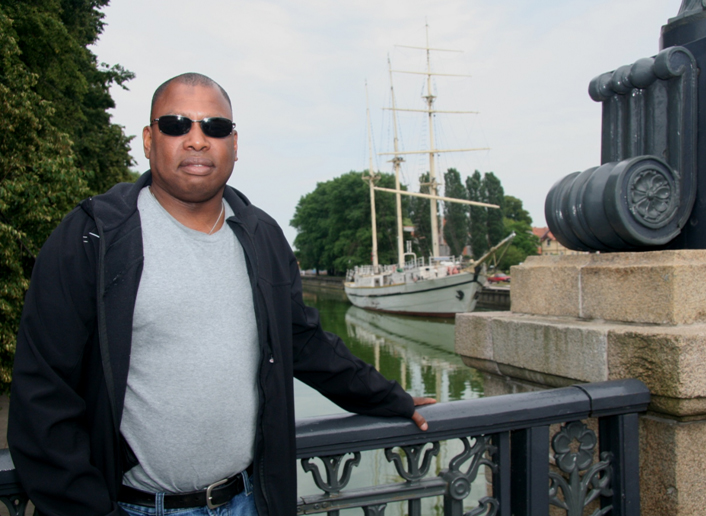
Clifford Lont (47), Chairman of Klaipeda International Business Club, has moved the long way from Suriname in South America to a much colder climate here at the Lithuanian coast.
Suriname, Suriname… I search my brain frantically for ancient geography skills ... Clifford Lont sits in front of me at a café table on the left bank of River Dane in the heart of Klaipeda. He has just told me that his native country is called Suriname, located in South America. But where? I have heard the name before, but can not visualize the location on my imaginary map and see finally no other option but to ask him...
And Clifford tells willingly about the country and city he originates from. He tells me that Suriname is a small country of less than 500.000 inhabitants, located near equator in the northeast of the South American continent, bounded by Guyana on the west, French Guyane on the east and Brazil to the south. He tells that Suriname is set in a natural tropical wilderness, a splendid combination of the Caribbean and South America, with fascinating reminders of a sometimes turbulent past Influenced by numerous cultures - African, Amerindian, Asian, Jewish and Dutch. The country was earlier a Dutch colony.
He tells me that his former homeland is dominated by mighty rivers which provide essential highways into the rainforest and jungles of the interior, which remain virtually untouched by man.
Clifford was born and grew up in Suriname’s bustling capital and port city, Paramaribo, at the Suriname River estuaries.
|
|
|
Clifford tells me that his home country got its independent when he was 11 years old, in 1975, but that a military coup five years later again put the country far back, not least financially. The other family members came gradually out of Suriname, to the former colonial ‘masters’ in Holland, while Clifford himself travelled to Georgia in the United States. Here he went to college and obtained eventually a bachelor's degree in sociology.
"There is a person from the time I am infinitely grateful to," tells Clifford with motion in his voice, "Ms. Deen DaySmith, the founder of the Days Inn hotels in the USA. When I came to Georgia, I was of very limited means, and she offered then to pay 80% of my studies through the first half of the 1990s. I can only hope she reads this and understands how grateful I am."
But it was not sociology that would be Clifford's further path through life. During the study period he started to take interest in the construction industry, and in 2000 he had already established his own company within this sector in the U.S. state of Georgia.
"Then, in 2000, she suddenly appeared there, in the state, the woman who would change my life completely. She had come from her hometown Klaipeda in Lithuania to Georgia for a so-called 'work and study programme'. And to make a long story short, we fell in love, and not long after it became clear that she was pregnant. She preferred, however, not to give birth in the United States, and returned to Klaipeda. Also I finally managed to get a visa to Lithuania, and in early July exactly 10 years I set for the first time foot on this country's soil. I managed to get here just in time, because on the ninth of July 2001 our twins, a boy and a girl, were born. "Clifford describes the birth and his now ten-year-old twins with deep father's pride.
"During the ten years I now have lived here I worked in the beginning on the the farm of my father in law in the Kretinga village, later in all sorts of building professions – as a bricklayer, carpenter, electrician and plumber – and sometimes also as a teacher of English."
"Unfortunately, the marriage with my wife came to an end last year, and we are now divorced. I do, however, love my kids so much that I do not want to move from here. Although the winter cold sometimes kills me," tells the man whose skin colour and upbringing under much warmer climes do not seem entirely suited to the Klaipeda sometimes harsh climate.”
Clifford is now working for a Danish company in Klaipeda, Baltic Modules, which produces wall, floor and roof elements for residential buildings in Denmark. He tells me that his dream is to become more and more engaged in design of the buildings they are manufacturing.
"Then, in April 2010, I was elected chairman of the Klaipeda International Business Club and re-elected this year," he tells, informing me that the club now has 56 members, of which 20-25 are active. "I must admit that we first of all is a social club with networking as our core activity. But we also conduct some seminars and other, more professional-oriented activities."
"Clifford, I have two remaining questions for you this Sunday afternoon here at the river edge in Klaipeda," I say to him.
Question number 1: "Do you have something to say to all the young people who are about to leave Lithuania in an emigration flow that seems to have no end?"
Question number 2: "Have you experienced racism here in Lithuania, and what is in case your normal reaction?"
It should be noted that Clifford does not seem to be much hampered by his dark skin colour, even here where so few stand just as much out as he does. He flirts lightly with the waitress in the outdoor restaurant where we sit. He smiles and nods to people passing by. He has obviously become a familiar face to many over the years he has lived here. Then he answers my questions:
1. "Do not run away. Because by doing that you contribute to emptying your home country for dynamic young people and good workers. Stay here. Those who dare to stay behind will be the winners in the end!"
2. “Well, let me first say that many do not know that there are black people also in South America. And to those with racist tendencies I would simply say: Get rid of your taboos. We are all just human beings..."
- Bookmark :
- Digg
- del.icio.us
- Stumbleupon
- Redit it
- Posted by - (1) Comment
|
Article 58 of the RSFSR (Russian Soviet Federative Socialist Republic) Penal Code was put in force on 25 February 1927 to arrest those suspected of counter-revolutionary activities. It was revised several times. In particular, its Article 58-1 was updated by the listed sub-articles and put in force on 8 June 1934. 58-1:
Definition of counter-revolutionary activity: PART 2 OF 6 The “PROCESS” EXECUTIONS BETWEEN 1944 AND 1947
|
The “PROCESS”
EXECUTIONS BETWEEN 1944 AND 1947
In Soviet-occupied Lithuania, Division A of the NKGB–MGB was in charge of the executions of people sentenced to death. When the documents containing information about the death sentences pronounced by the Military Tribunal and information on where the detained persons were held was received by Division A, the condemned people were moved from the various agencies of detention to Vilnius 1st prison of the NKVD–MVD (today– Lukiškių skg. 6) and from there to the Vilnius NKGB–MGB internal prison (today – Gedimino pr. 40 / Aukų g. 2A).

A special group consisting of the head of Division A, the head of the prison, deputy head of the prison, wardens, and a representative of the Military Prosecutor’s Office carried out the executions by shooting. Prior to execution, the head of Division A and the prosecutor verified the identity of the person sentenced to death and other documents. The convicts were shot in a special cell, which, in an attempt to mask its real purpose, was marked as a “kitchen” on the plan of the building. An executioner, who had gained experience in various regions of the Soviet Union, would carry out the sentence. Usually executions were carried out by the heads of internal prisons. According to the Criminal Code of the Russian Soviet Federal Socialist Republic (RSFSR) the only method of execution was by shooting. The majority of the convicts were shot in the back of the head. However, some of them died differently, as signs of stabbing and cuts were identified on some bodies. After execution, the head of Division A, the prosecutor, and the executioner signed the deed of execution of the death sentence. The head of the division informed the leadership of the Military Tribunal which had passed the sentence, and the leadership of the USSR NKGB–MGB in Moscow about the execution by issuing certificates.
Between 1944 and 5 January 1946, when Division A was managed by Lieutenant-Colonel Stepan Kharchenko, 535 executions were carried out and from 15 January 1946 and 16 April 1947, under the leadership of Major Pavel Grishin, there were a further 232 executions.
The surviving KGB archive documents specify the names of the executioners. In September–October 1944, Yegor Kuznetsov, Commandant Captain of the NKGB–MGB unit of the Lithuanian SSR, personally carried out the execution of 18 convicts. Between November 1944 and October 1946, the head of the prison Major Vasiliy Dolgirev lead 41 mass executions during which he personally executed 650 people. From November 1946 until March 1947, executions were carried out by Captain Boris Prikazchikov, the head of the prison. During 11 such executions, 99 lives were taken.
After each execution, the bodies were stripped, loaded onto a truck, covered with tarpaulin, and taken at night to be buried within the grounds of Tuskulėnai Manor which was guarded by NKGB–MGB. The bodies were thrown into an already prepared trench. Many trenches were used several times: new bodies were thrown on top of the corpses covered with lime and tar paper. When the trench filled up, it was covered with soil and stones. Executioners referred to this procedure cynically as ‘disposal of the contingent.’
The “PROCESS” – ARTICLE 58
Article 58 of the RSFSR (Russian Soviet Federal Socialist Republic) Penal Code was put in force on 25 February 1927 to arrest those suspected of counter-revolutionary activities. It was revised several times. In particular, its Article 58-1 was updated by the listed sub-articles and put in force on 8 June 1934.
This article introduced the formal notion of the “enemy of workers”. Penal codes of other republics of Soviet Union also had articles of similar nature.
58-1: Definition of counter-revolutionary activity:
"A counter-revolutionary action is any action aimed at overthrowing, undermining or weakening of the power of workers' and peasants' Soviets... and governments of the USSR and Soviet and autonomous republics, or at the undermining or weakening of the external security of the USSR and main economical, political and national achievements of the proletarian revolution"
58-1а. Treason: death sentence or 10 years of prison, both cases with property confiscation.
58-1в. In the case of flight of the offender of treason, his relatives were subject to 5–10 years of imprisonment with property confiscation or 5 years of Siberia exile, depending on the circumstances: either they helped or knew and didn't report or simply lived with the offender.
(Between 28 September 1944 and 16 April 1947, the death penalty was carried out on 767 people in Lithuania. 613 of them were sentenced under Articles 58-1а and 58-1в ‘For treason’ of the 1926 Criminal Code of the RSFSR)
58-1б. Treason by military personnel: death sentence with property confiscation.
58-1г. Non-reporting of a treason by a military man: 10 years of imprisonment. Non-reporting by others: offense by Article 58-12.
58-2. Armed uprising or intervention with the goal to seize the power: up to death with confiscation, including formal recognition as "enemy of workers".
58-3. Contacts with foreigners "with counter-revolutionary purposes" (as defined by 58-1) are subject to Article 58-2.
58-4. Any kind of help to "international bourgeoisie" which, not recognizing the equality of communist political system, strives to overthrow it: punishment similar to 58-2.
58-5. Urging any foreign entity to declaration of war, military intervention, blockade, capture of state property, breaking diplomatic relations, breaking international treaties, and other aggressive actions against USSR: similar to 58-2.
58-6. Espionage. Punishment: similar to 58-2.
58-7. Undermining of state industry, transport, monetary circulation or credit system, as well as of cooperative societies and organizations, with counter-revolutionary purpose (as defined by 58-1) by means of the corresponding usage of the state institutions, as well as by opposing their normal functioning: same as 58-2. Note: the offense according to this article was known as wrecking and the offenders were called "wreckers".
58-8. Terrorist acts against representatives of Soviet power or of workers and peasants organisations: same as 58-2.
58-9. Damage of transport, communication, water supply, warehouses and other buildings or state and communal property with counter-revolutionary purpose: same as 58-2.
58-10. Anti-Soviet and counter-revolutionary propaganda and agitation: at least 6 months of imprisonment. In the conditions of unrest or war: same as 58.2.
58-11. Any kind of organisational or support actions related to the preparation or execution of the above crimes is equated to the corresponding offenses and prosecuted by the corresponding articles.
58-12. Non-reporting of a "counter-revolutionary activity": at least 6 months of imprisonment.
58-13. Active struggle against revolutionary movement of tsarist personnel and members of "counter-revolutionary governments" during the civil war, same as 58-2.
58-14 (added on June 6, 1937) "Counter-revolutionary sabotage", i.e., conscious non-execution or deliberately careless execution of "defined duties", aimed at the weakening of the power of the government and of the functioning of the state apparatus is subject to at least one year of freedom deprivation, and under especially aggravating circumstances, up to the highest measure of social protection: execution by shooting with confiscation of property.
Article 58 was used for the imprisonment and execution of many prominent people as well as multitudes of nonnotable innocents.
Sentences were long, up to 25 years, and frequently extended indefinitely without trial or consultation. Inmates under Article 58 were known as "politichesky" (полити́ческий), as opposed to common criminals, "ugolovnik" (уголо́вник). Upon release, the prisoner would typically be sent into an exile within Russia without the right to settle closer than 100 km/60 miles from large cities.
On 3 September 1944, the People’s Commissariat for Internal Affairs arrested partisan signaler and teacher Jonas Tomėnas in Šiauliai. This is a translation of an excerpt from the letter of farewell he was able to secretly send to his family. Jonas Tomėnas was one of the many buried in the Mass Graves of Tuskulėnai.
“I do not know when I will return, it depends on various circumstances. Stay safe and strong.”
The “PROCESS”
The “PROCESS” consisted of four primary “STEPS”. It was required that these four steps be precisely documented so that everything was kept “legal” in accordance with the 1926 Criminal Code Article 58 of RSFSR.
Step 1 – Conviction and Death Sentence
Military Tribunals of the USSR NKVD troops and the non-judicial authority, the Extraordinary Meeting of the People’s Commissariat of Internal Affairs of the USSR, carried out the instructions of Communist Party officials by surveilling, arresting, investigating, imprisoning, and sentencing to death “traitors of the motherland”.
The following is the English translation of the document which sentenced to death by shooting partisan Jonas Sliuževičius issued by the Military Tribunal of the Lithuanian SSR NKVD troops on 12 March 1946.
|
Strictly confidential /Handwritten note: C06 (104) 120/
SENTENCE On behalf of the Union of the Soviet Socialist Republics 12 March 1946, Kaunas
The Military Tribunal of the Lithuanian SSR NKVD troops consisting of the chairman – Major of Justice Rumyancev, members – Lieutenant Bondarev and Militia Sergeant Nikolayenko, secretary – Mamedova, and translator – Leskauskas, at the hearing held in camera has heard the case in which citizen: Jonas SLIUŽEVIČIUS, son of Pranas, born in 1923, residing in Graužėnai Village, Veliuona Rural District, Kaunas County of the Lithuanian SSR, originating from middle peasants, himself a middle peasant, non-party member, education – 4 grades, single, Lithuanian, citizen of the USSR, no previous convictions, is charged with a crime pursuant to Articles 58 (I)(a) and 58(II) of the Criminal Code of the RSFSR. During both the investigation stage of the proceeding and the judicial proceeding the following has been ESTABLISHED:
In July 1945, the defendant SLIUŽEVIČIUS voluntarily joined the counter-revolutionary nationalist cohort lead by the bandits Gedutis and Naujokas. As a member of the cohort, SLIUŽEVIČIUS was armed. He had a rifle, 150 pieces of ammunition, and a Walter pistol. At the end of July 1945, together with the bandit Marcinkus, SLIUŽEVIČIUS went for food to Gružėnai Village and on the way, in Gervėnai Village, came across Rudžinskas, the commander of Veliuona Rural District platoon of the defenders of the people who was armed with an automatic rifle. Sliuževičius and Marcinkus hid in a ditch and started shooting at Rudžinskas and shot him dead. In view of the above, the Military Tribunal adjudged SLIUŽEVIČIUS to be guilty of the crimes pursuant to Articles 58 (I)(a) and 58(II) of the Criminal Code of RSFSR. Considering the degree of the crime committed by Sliuževičius and pursuant to Articles 319 and 320 of the Code of the Criminal Procedure of the RSFSR and Article 49 of the Criminal Code of the RSFSR:
RULED
to convict Jonas SLIUŽEVIČIUS, son of Pranas, pursuant to Article 58(I)(a) of the Criminal Code of the RSFSR, and to impose the most severe sentence – death by shooting – and to confiscate all his personally owned property. The sentence is final and no appeal in cassation can be lodged.
Original if certified by relevant signatures. True copy. Chairman Major of Justice /Signature/ Rumyancev /Seal:
Translation property of the Memorial Complex of the Tuskulėnai Peace Park. All rights reserved.
|
Step 2 – Giving the Instructions to Execute
When the documents containing information about the death sentences pronounced by the Military Tribunal or the Extraordinary Meeting of the People’s Commissariat of Internal Affairs of the USSR and information on where the detained persons were held was received by Division A, the condemned people were moved from the various agencies of detention to Vilnius 1st prison of the NKVD–MVD (today– Lukiškių gatvė 6) and from there to the Vilnius NKGB–MGB internal prison (today – Gedimino pr. 40 / Aukų g. 2A).
The following is the English translation of a strictly confidential notification dated 7 March 1946 from Lieutenant-Colonel of Justice Aleksey Khaliavin, chairman of the Military Tribunal of the Lithuanian SSR NKVD troops, to Lieutenant-Colonel Stepan Kharchenko, head of Division A of the Lithuanian SSR NKGB, instructing him to execute five convicts, informing him of the detention agency in which the convicts are located, and asking for a report when the sentence has been carried out.
|
/Handwritten note: (47) 08/03/1946 No. 190/ Strictly confidential 1 copy To the Head of Division A of the Lithuanian SSR NKGB LIEUTENANT-COLONEL Kharchenko USSR Military Tribunal of the Lithuanian SSR NKVD troops 1946 /illegible/ No. 00185 Vilnius / Handwritten note: Absent /illegible/ For execution 09/03/1946/ The Military Tribunal of the Lithuanian SSR NKVD troops requests permission to carry out the most severe sentence – death by shooting – passed on 8–9 January 1946 by the Military Tribunal pursuant to Article 58 (1)(a) of the Criminal Code of the RSFSR on the following convicts:
Adolfas Kubilius, son of Leonas, born in 1918 in Budriai Village, Kartena Rural District, Kretinga County of the Lithuanian SSR. Jonas Venclauskas, son of Antanas, born in 1919 in Tomsk. Antanas Stalmokas, son of Antanas, born in 1920 in Gargždai Town, the rural district of the same name, Kretinga County of the Lithuanian SSR. Sergejus Semsys, son of Jonas, born in 1908 in Trakiškiai Village, Kalvarija Rural District, Marijampolė County of the Lithuanian SSR. Stepas Derbutas, son of Ferdinandas, born in 1904 in Alsėdžiai Town, the rural district of the same name, Telšiai County of the Lithuanian SSR. The sentence was passed and approved by the Military Collegium of the USSR Supreme Court. The convicts are imprisoned in Vilnius prison. Please notify the time for carrying out the execution. Annex: a copy of the sentence and extracts dated 18 February 1946 from instructions (for 5 people) No. 1/00171-75 of the Military Collegium of the USSR Supreme Court.
CHAIRMAN OF THE MILITARY TRIBUNAL OF THE LITHUANIAN SSR LIEUTENANT-COLONEL OF JUSTICE (Khaliavin) /Signature/ /Handwritten note: /Seal: Received
Translation property of the Memorial Complex of the Tuskulėnai Peace Park. All rights reserved.
|
The following is the English translation of a strictly confidential notification dated 19 March 1946 from Major of Justice Afonin, deputy chairman of the Military Tribunal of the Lithuanian SSR NKVD troops, to Lieutenant-Colonel Stepan Kharchenko, head of Division A of the Lithuanian SSR NKGB, instructing him to execute Leonas Virkietis and Jonas Starevičius, informing him of the detention agency in which the convicts are located, and asking for a report when the sentence has been carried out.
|
/Handwritten note: (105)/ / Handwritten note: 195 / 13/03/1946/ Strictly confidential 1 copy To the Head of Division A of the Lithuanian SSR NKGB LIEUTENANT-COLONEL Kharchenka
USSR Military Tribunal of the Lithuanian SSR NKVD troops /Illegible/ March 1946 /Illegible/ 0209 / Handwritten note: Accept for execution 30/03/1946/ /Signature/ The Military Tribunal of the Lithuanian SSR NKVD troops requests permission to carry out the most severe sentence passed on 19 January 1946 by the Military Tribunal on the following convicts:
The sentence was passed and approved by the Military Collegium of the USSR Supreme Court. The convicts are imprisoned in Kaunas prison. Please notify the time for carrying out the execution. Enclosure: two copies of the instructions of the Military Collegium and a copy of the sentence.
DEPUTY CHAIRMAN OF THE MILITARY TRIBUNAL OF THE LITHUANIAN SSR NKVD MAJOR OF JUSTICE /Signature/ /Afonin/ /Seal: Military Tribunal of the Lithuanian SSR NKVD/
/Illegible/ 2 copies /Illegible / adr. /Illegible/ MT
Translation property of the Memorial Complex of the Tuskulėnai Peace Park. All rights reserved.
|
The following is the English translation of a strictly confidential letter of 14 May 1946 from Colonel-General of justice Vasilij Ulrich, chairman of the USSR Supreme Court Military Collegium, to the chairman of the Military Tribunal of the Lithuanian SSR MVD troops to carry out the death sentence on Jonas Sliuževičius without delay and to notify him of the execution.
|
/Handwritten note: (108) 121/ Copy Urgent Strictly confidential Military Collegium of the USSR Supreme Court 14 May 1946 No. 00834 Moscow
To the CHAIRMAN OF THE MILITARY TRIBUNAL OF THE LITHUANIAN SSR MVD TROOPS
Please carry out the most severe sentence passed by the Military Tribunal without delay on the following convicts: Jonas SLIUŽEVIČIUS, son of Pranas, born in 1923.
Please inform when the sentence has been executed
Chairman of the Military Collegium of the USSR Supreme Court Colonel-General of Justice (V. Ulrikh)
True according to the original. Secretary of the Military Tribunal of the Lithuanian SSR MVD troops /Signature/ (Sakharova) /Illegible/ /Seal: Military Tribunal of the Lithuanian SSR NKVD /
Translation property of the Memorial Complex of the Tuskulėnai Peace Park. All rights reserved.
|
Please note - Military tribunals were subordinate to the USSR Supreme Court Military Collegium which was the highest instance of the legal system. After passing a death sentence, military tribunals had to notify the Military Collegium of it without delay and the Military Collegium, within 72 hours of the receipt of the notification by telegram, could suspend execution of the sentence. However, the Military Collegium usually confirmed decisions made by the military tribunals.
Step 3 – Verifying the Identity
The next step of the “Process” was that prior to an execution, the head of Division A of the Lithuanian SSR NKGB–MGB and the prosecutor verified the identity of the person sentenced to death and other documents.
The following is the translation of a certificate issued by Major of Justice V. Barmin, assistant to the prosecutor of the Lithuanian SSR NKVD troops on 22 March 1946, confirming that the sentence on Jonas Starevičius can be carried out.
|
[ Handwritten note: (I V7) Strictly confidential ANNEX TO THE DEED 22 March 1946
CERTIFICATE
Jonas Starevičius, son of Petras, born in 1921 sent to me is indeed the person, pursuant to Article 58(I)(a) of the Criminal Code of the RSFSR, on 19/01/1946 sentenced by the Military Tribunal of the Lithuanian SSR NKVD troops to death by shooting.
Assistant Military Prosecutor of the Lithuanian SSR NKVD Major of Justice /Signature/ / Barmin /
22 March 1946
Translation property of the Memorial Complex of the Tuskulėnai Peace Park. All rights reserved.
|
Step 4 – The Execution
Translation of The deed of execution of the death sentence on 7 February 1945, which states who carried out the execution: “Eiva was shot by Major Dolgirev, head of the Lithuanian SSR NKGB internal prison”. The deed was signed by Captain of Justice Fiodorov, deputy prosecutor of the Lithuanian SSR NKVD Troops Military Prosecutor’s Office, Major Stepan Kharchenko, head of the Lithuanian SSR NKGB Division A, and Major Vasiliy Dolgirev, head of the Lithuanian SSR NKGB internal prison.
|
/ Handwritten note: (250) 254/ Deed No. 136 7 February 1945, Vilnius
We, the undersigned, Deputy Prosecutor of the Lithuanian SSR NKVD troops Fedorov and State Security Major Kharchenka, head of the Lithuanian SSR NKVD Division A, carried out the sentence passed by the Military Tribunal of the Lithuanian SSR NKVD troops on Bronius Eiva, son of Aleksandras, born in 1913, Pašėtė Village, Šėta Rural District, Kėdainiai County of the Lithuanian SSR, who was sentenced by the Military Tribunal pursuant to Article 58 (I)(a) of the Criminal Code of the RSFSR to death by shooting. Eiva was executed by State Security Major Dolgirev, the head of the Lithuanian SSR NKGB internal prison. Subsequently this deed was completed.
Deputy Prosecutor Captain of Justice /Signature/ /Fedorov/
Head of the Lithuanian SSR NKVD Division A State Security Major /Signature/ /Kharchenka/
Head of the Lithuanian SSR NKGB internal prison State Security Major Signature/ /Dolgirev/
Translation property of the Memorial Complex of the Tuskulėnai Peace Park. All rights reserved. .
|
Translation of the deed of execution of the death sentence dated 25 December 1946 and signed by Major Pavel Grishin, head of Division A of the Lithuanian SSR NKGB, Lieutenant-Colonel of Justice Tugov, assistant to the prosecutor of the Baltic Military District, and the executioner Captain Boris Prikazchikov, head of the Lithuanian SSR MGB internal prison.
|
/Handwritten note: (111)/ Strictly confidential
DEED
25 December 1946, Vilnius
We, the undersigned, confirm that on the above date the sentence of death by shooting passed by the Military Tribunal of the Lithuanian SSR NKVD troops on 17 August 1946 was carried out on Juozas GIEDRA, son of Juozas, who is also known as Juozas BUJANAUSKAS, son of Pranas, born in 1922 in the town of Josvainiai, Kėdainiai County of the Lithuanian SSR and on Juozas PETRUŠKEVIČIUS, son of Antanas, born in 1927 in Margininkai Village, Pakuonis Rural District, Kaunas County of the Lithuanian SSR. The remains were buried.
Acting head of the Lithuanian SSR NKGB internal prison Captain /Prikazchikov/ /Signature/
Translation property of the Memorial Complex of the Tuskulėnai Peace Park. All rights reserved.
|
After the execution the body of the executed person would be stripped of clothing, loaded onto a truck and driven to Tuskulėnai for burial in a mass grave.
Step 4 – Confirming the Execution
Once the execution had been carried out the head of Division A of the Lithuanian SSR NKGB–MGB informed the leadership of the Military Tribunal which had passed the sentence, and the leadership of the USSR NKGB–MGB in Moscow about the executions by issuing certificates.
Translation of a strictly confidential notification dated 31 December 1946 from Major Pavel Grishin, head of Division A of the Lithuanian SSR NKGB, to Colonel of Justice Aleksey Khaliavin, chairman of the Military Tribunal of the Lithuanian SSR MVD troops, informing him that the execution of Juozas Giedra-Bujanauskas was carried out on 25 December 1945.
|
/Handwritten note: (109)/ Strictly confidential Strictly private/ Handwritten note: /Illegible/ 10/15994/A 31/12/1946 / Signature/
To the CHAIRMAN OF THE MILITARY TRIBUNAL OF THE LITHUANIAN SSR MVD TROOPS
Lieutenant-Colonel of Justice KHALIAVIN Vilnius
Ref 14/12/1946 No. 00964
I hereby inform you that the sentence passed on 17 August 1946 by the Military Tribunal of the Lithuanian SSR NKVD troops on Juozas GIEDRA, son of Juozas, who is also known as Juozas BUJANAUSKAS, son of Pranas, born in 1922 in the town of Josvainiai, Kėdainiai County of the Lithuanian SSR was carried out on 25 December 1946 in Vilnius.
Head of the Lithuanian SSR MGB Division A Major /Signature/ /Grishin/
Translation property of the Memorial Complex of the Tuskulėnai Peace Park. All rights reserved.
|
Look for the next article
Part 3 of 6
BISHOP VINCENTAS BORISEVIČIUS
Dear readers
WE NEED YOUR HELP
Dear VilNews readers, we need your help. As we have said, the victims that were executed in the NKGB–MGB internal prison in between 28 September 1944 and 16 April 1947 were buried in secret mass graves in the territory of the Tuskulėnai Manor. These victims have been found, their bodies recovered, given the dignified burial they never received and their souls have been blessed by a Holy person of the religion the worshipped.
26 May 1947, following the order of the Presidium of the Supreme Council of the USSR, the death penalty was abolished.
On 12 January 1950, the Presidium of the Supreme Council of the USSR passed a decree re-instating the death penalty. Between October 1950 and July 1952, 182 people sentenced to death were executed at Vilnius NKGB–MGB internal prison.
Their place of burial is still not known.
After July 1952 to 1961 executions continued pursuant to the 1926 Criminal Code Article 58 of RSFSR.
The burial place of these victims is still unknown.
The 1926 Criminal Code Article 58 of RSFSR was terminated in 1961 but executions continued.
The burial place of these victims is still unknown
Dear readers we would like to find where these people are buried, recover their bodies, give them the dignified burial they never received and have them blessed by a Holy person of the Religion they worshipped.
This is where we need your help. The NKVD and NKGB–MGB officers that oversaw these executions are now all dead. What ever records and documents which still exist are most likely locked away in a vault somewhere in the Russian Federation and it would seem highly unlikely that anyone in the Russian Federation would be kind enough allow access to these documents and records so that we could find out the location of the burial sites or simply tell us where these people are buried.
We know that there are people out there that know the location of some of these burial sites. Maybe it is a person that processed the documents, maybe it is some one that was just a rank and file soldier that was ordered to drive the truck that transported the bodies or was ordered to dig the trenches for the graves, maybe it is a colleague of one of these people or maybe it is the bartender that heard some of these people talk of it one night. The possibilities are endless.
Maybe none of these people with first hand knowledge of the burial sites are still alive. In that case we are sure that there are people out there with second hand or even third hand information. To have first hand knowledge of these executions would weigh very heavily on any civilized person’s heart and it is very possible that after carrying this weight inside them for many years they finally felt the need to free themselves from this burden they carried inside and told some one.
If you have any information at all, any information of any kind – Please tell us.
It is not important to us how you know, who it was, what they did or who told you.
None of this is important.
The only thing that is important is that we find where the executed people are buried.
This is all we care about.
What we want to do is best explained in the words from Bronius Eiva’s farewell letter he wrote to his wife while waiting his execution while in the prison of Ukmergės Peoples Commissariat for Internal Affairs.
“Please find out when I was shot or hanged and where
they bury me.
Dig me up and take me to Šeta cemetary.”
This is all we want to do – Find where they are buried, dig them up and then give them a proper burial but we can only do this with your help.
All information will be kept strictly confidential
We are not concerned with who or what
We are only concerned with where these people are buried
If you have any information of any kind please contact:
The Memorial
Complex of Tuskulenai Peace Park
Žirmūnų Gatvė 1F,
LT-09239, Vilnius
Lithuania
Telephone: +370 5
275 1223
E-mail. tuskulenai@genocid.lt
You can also contact me at vkvilnius-tuskulenai@yahoo.com
We sincerely thank you for your help.
Su pagarbe
Vincas Karnila
- Bookmark :
- Digg
- del.icio.us
- Stumbleupon
- Redit it
- Posted by - (0) Comment
Follow VilNews
around the World!
 Lithuania has put more footprints in the world sands than you might think. We've therefore followed some of them (see below articles) in order to let you know and to spread the word… We have met India's leading Sanskrit experts, telling us about the many similarities to Lithuanian language... We have travelled through 26 European countries and found lots of Lithuanian footsteps... We have been to South Africa to speak to the enormous population of Lithuanian Jews there… And we have, last but not least, discovered a huge range of Lithuanian tracks in the USA!
Lithuania has put more footprints in the world sands than you might think. We've therefore followed some of them (see below articles) in order to let you know and to spread the word… We have met India's leading Sanskrit experts, telling us about the many similarities to Lithuanian language... We have travelled through 26 European countries and found lots of Lithuanian footsteps... We have been to South Africa to speak to the enormous population of Lithuanian Jews there… And we have, last but not least, discovered a huge range of Lithuanian tracks in the USA!
- Bookmark :
- Digg
- del.icio.us
- Stumbleupon
- Redit it
- Posted by - (0) Comment

Tour guide: Aage Myhre
aage.myhre@VilNews.com
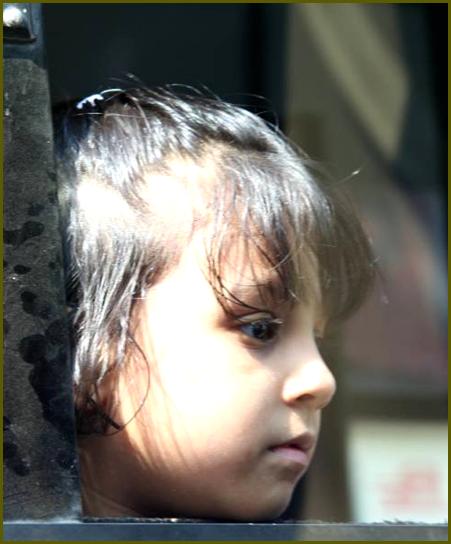
A rickety old bus runs past me in a busy, polluted Mumbai street. Suddenly I see
a little girl's face in one of the bus windows. The contrast between the old bus
and the beautiful child is striking. We are in India!
- Bookmark :
- Digg
- del.icio.us
- Stumbleupon
- Redit it
- Posted by - (2) Comment
|
|
Text and photos: Aage Myhre
|
|
|
MADHUR ROY waits for me at the Delhi International Airport when I fly in from Mumbai in the late evening. She represents the Ministry of Foreign Affairs, and has been given the responsibility to show me around and introduce me to people I have special interest in meeting during my visit. On the way to the hotel she tells me about the programme. She also talks about her hobbies; filmmaking and singing. During my days in Delhi, she does a very good job, every day from early morning to late evening. A few days later, on the way to the airport, she sings a quiet, melodic song about herself, a song about the little girl from a village up in the mountains far to the north who came to live in the big city. I see tears rolling down her cheeks, and I feel very touched having got to know a person who not only performs her job in a very professional manner, but also dares to show her feelings in such a way. My visit to India got a new dimension after the meeting with Madhur. Thanks a lot!! |
|
|
|
INDIA
India, officially the Republic of India, is a country in South Asia. It is the world’s seventh-largest country by geographical area, the second-most populous country with over 1.18 billion people, and the most populous democracy in the world. Mainland India is bounded by the Indian Ocean on the south, the Arabian Sea on the west, and the Bay of Bengal on the east; and it is bordered by Pakistan to the west, the People's Republic of China, Nepal, and Bhutan to the north; and Bangladesh and Burma to the east. India is in the vicinity of Sri Lanka, and the Maldives in the Indian Ocean, its Andaman and Nicobar Islands are also in the vicinity of the Indonesian island of Sumatra in the Andaman Sea, and in the Andaman Sea India also shares a maritime border with Thailand. India has a coastline of 7,517 kilometres (4,700 mi). |
Home to the ancient Indus Valley Civilisation and a region of historic trade routes and vast empires, the Indian subcontinent was identified with its commercial and cultural wealth for much of its long history. Four major religions, Hinduism, Buddhism, Jainism and Sikhism originated here, while Zoroastrianism, Judaism, Christianity and Islam arrived in the first millennium CE and shaped the region's diverse culture. Gradually annexed by the British East India Company from the early eighteenth century and colonised by the United Kingdom from the mid-nineteenth century, India became an independent nation in 1947 after a struggle for independence that was marked by widespread non-violent resistance.
India is a federal constitutional republic with a parliamentary democracy consisting of 28 states and seven union territories. Apluralistic, multilingual and multiethnic society, India is also home to a diversity of wildlife in a variety of protected habitats. The Indian economy is the world's eleventh largest economy by nominal GDP and the fourth largest by purchasing power parity.
Since the introduction of market-based economic reforms in 1991, India has become one of the fastest growing major economies in the world; however, it still suffers from poverty, illiteracy, corruption, disease, and malnutrition. India is classified as a newly industrialised country and is one of the four BRIC nations. It is a nuclear weapons state and has the third-largest standing armed force in the world, while its military expenditure ranks tenth in the world. It is a founding member of the United Nations, the East Asia Summit, the South Asian Association for Regional Cooperation and the Non-Aligned Movement and a member of the Commonwealth of Nations and the G-20 major economies.
|
|
DELHI (official name: National Capital Territory of Delhi - NCT) is the largest metropolis by area and the second-largest metropolis by population in India. It is the eighth largest metropolis in the world by population with more than 12.25 million inhabitants in the territory and with nearly 22.2 million residents in the National Capital Region urban area The name Delhi is often also used to include some urban areas near the NCT, as well as to refer to New Delhi, the capital of India, which lies within the metropolis. It is the capital of India and its political and cultural centre. Located on the banks of the River Yamuna, Delhi has been continuously inhabited since at least the 6th century BCE. |
|
|
MUMBAI, also known as Bombay is the capital of the Indian state of Maharashtra. It is the most populous city in India, and one of the most populous cities in the world, with a population of approximately 20 million. Along with the neighbouring urban areas, including the cities of Navi Mumbai and Thane, it is one of the most populous urban regions in the world. Mumbai lies on the west coast of India and has a deep natural harbour. Mumbai is also the richest city in India, and has the highest GDP of any city in South or Central Asia.
|
|
|
1
|
|
|
|
||||||||||||
![]() Incredible
business growth
Incredible
business growth

Geeta and Gulu Mirchandani in their beautiful
Mumbai home
During my stay in Mumbai I get one night invited to the home of Geeta and Gulu Mirchandani. Gulu is an old acquaintance who since 1981 has developed and been in the forefront of the electronics giant ONIDA (Mirc Electronics). I consider Gulu one of the masterminds behind the impressive development India's economy has undergone over the last 30 years. He is also one of those behind the initiative 'Mumbai Angels' that provides a unique platform to start-up companies by bringing them face to face with successful entrepreneurs, professionals and executives, also helping with start-up funding. I believe this kind of support and team-work is what brings India quickly forwards in today’s harsh economic climate. Ref. www.mumbaiangels.com
|
|
The Gross Domestic Product (GDP) in India expanded at an annual rate of 8.80 percent in the 2nd quarter of 2010. From 2004 until 2010, India's average quarterly GDP Growth was 8.37 percent reaching an historical high of 10.10 percent in September of 2006 and a record low of 5.50 percent in December of 2004. India's diverse economy encompasses traditional village farming, modern agriculture, handicrafts, a wide range of modern industries, and a multitude of services. Services are the major source of economic growth, accounting for more than half of India's output with less than one third of its labour force. The economy has posted an average growth rate of more than 7% in the decade since 1997, reducing poverty by about 10 percentage points.
|
![]() Incredible
Indian-Lithuanian relations
Incredible
Indian-Lithuanian relations

Professor Lokesh Chandra (85), one of India’s leading experts on Sanskrit and Buddhism
It’s early morning in Delhi. I have been invited to the small, dark office of Professor Lokesh Chandra, one of India’s leading experts on Sanskrit and Buddhism. “The same year I was born, 1927, my father went to London to get a degree in Lithuanian language. He spoke the language fluently, but he never visited Lithuania,” tells the elderly professor, still with his Kashmir coat and cap on despite the outside temperature of close to 300 Celsius.
I soon learn that the professor’s knowledge about the connections between Old Sanskrit and Lithuanian language and ancient cultural ties between India and Lithuania is nothing but amazing. He confirms that there since ancient times have been unique ties between India and Lithuania, not only with regards to language. Also the songs, the medieval cultures and more were extraordinary closely connected to each other.
Here is what he tells me this early morning at his New Delhi office: “The very mention of Lithuanian opens up an image, a vision that gives a people their identity through language. It shows how the darkness of dreams becomes the new embodied hope. My father was stimulated and strengthened in his work on the development of Hindi by the history of Lithuanian language. It has been the eternal continuity of these people; - it rustles something deep in their being. My father felt that we in India share with our distant Lithuanian brothers the silent geography of lost frontiers. Political freedom is inseparable from language.”
And the professor continues with his amazing story: “My father would relate how grandmas in the remote villages narrated folk-tales to eager grandchildren in their Lithuanian language which was despised by the Slavised nobility and punished by the Czarist regime. My father also told me how the Lithuanian daina (songs) were abandoned by the courts, but still continued to live on in the villages, faithfully preserved by the poorest people of Lithuania, guarded by the mothers of the families even during the darkest periods of Lithuania’s history.”
“Such was my first contact with Lithuania, in 1937, at an age of ten,” smiles Professor Chandra.

![]() Sanskrit
and Lithuanian are closely related
Sanskrit
and Lithuanian are closely related
Since the 19th century, when the similarity between Lithuanian and Sanskrit was discovered, Lithuanians have taken a particular pride in their mother tongue as the oldest living Indo-European language. To this day, to some Lithuanians their understanding of their nationality is based on their linguistic identity. It is no surprise then that they proudly quote the French linguist Antoine Meillet, who said, that anyone who wanted to hear old Indo-European should go and listen to a Lithuanian farmer. The 19th century maxim - the older the language the better - is still alive in Lithuania.

Professor Shashiprabha Kumar, and her amazing team of specialists at the Centre for Sanskrit Studies at the Jawaharlal Nehru University in New Delhi, is convinced that there is a very strong connection between Old Sanskrit and Lithuanian
It is a common belief that there is a close similarity between the Lithuanian and Sanskrit languages; Lithuanian being the European language grammatically closest to Sanskrit. It is not difficult to imagine the surprise of the scholarly world when they learned that even in their time somewhere on the Nemunas River lived a people who spoke a language as archaic in many of its forms as Sanskrit itself. Although it was not exactly true that a professor of Sanskrit could talk to Lithuanian farmers in their language, coincidences between these two languages are truly amazing, for example:
SON: Sanskrit sunus - Lithuanian sunus
SHEEP: Sanskrit avis - Lithuanian avis
SOLE: Sanskrit padas - Lithuanian padas
MAN: Sanskrit viras - Lithuanian vyras
SMOKE: Sanskrit dhumas - Lithuanian dumas
These Lihuanian words have not changed their forms for the last five thousand years.
The relationship between Sanskrit and Lithuanian goes even deeper. Take, for example, the Lithuanian word 'daina' that usually is translated as 'song'. The word actually comes from an Indo-European root, meaning ‘to think, to remember, to ponder over’. This root is found in Sanskrit as dhi and dhya. The word also occurs in the Rigveda (ancient Indian sacred collection of Vedic Sanskrit hymns) in the sense of ‘speech reflecting the inner thoughts of man’.
Apart from its Indo-European background as word and term, the ‘daina’ incorporates the idea of the Sun-Goddess who was married to the Moon-God, reminiscent of goddess Surya in the Rigveda.
|
|
OM (also spelled AUM) is a Hindu sacred sound that is considered the greatest of all mantras. The syllable OM is composed of the three sounds a-u-m (in Sanskrit, the vowels a and u combine to become o) and the symbol's threefold nature is central to its meaning. |
|
|
|
Wing Commander Rajinder Chaudhary (ret.), owner of Sue’s Indian Raja in Vilnius.
It is not easy to have a conversation with Raj if you sit down at one of the outdoor tables in front of his Indian restaurant near the Cathedral Square in Vilnius city centre. ‘Everyone’ knows Raj, and many want to shake hands with this extraordinary gentle man when they see him. During the 15 years that have passed since he first came to Lithuania, he has become an outstanding, popular living legend and institution here in this cold country so far away from his childhood home in warm and hospitable India.
Raj was commissioned in the Indian Air Force in 1961, where he served for more than 20 years. He decided to retire in 1983. That same year he was awarded the Vasishat Seva Medal by the President of India. He joined the private sector in India in 1984 and rose to higher management positions with renowned ‘business houses’. In 1993 he became the CEO of a British company for their CIS operations and moved to Moscow. In 1995 he decided to join a Dubai based group’s office in Moscow, as Resident Director.
And, luckily for Lithuania, in 1997 Raj moved to Vilnius and started his own business; a restaurant with the name ‘Sue’s Indian Raja’. In less than three years he had set up a pan-Baltic chain with six other restaurants. His restaurant in Riga was named among the 100 best restaurants in the world.
Raj is married to Lina Skutaite-Chaudhary, a medical doctor who now works as a specialist at a hospital in the United Arabian Emirates. He has two sons, both IT professionals in the United States.
He was the Honorary Consul of India to Lithuania for the period 2007-2010.
Raj is the kind of man who does genuine honour to his country and his people. Lithuania should, for its part, feel honoured having individuals like Raj living and working in this country.
|
- Bookmark :
- Digg
- del.icio.us
- Stumbleupon
- Redit it
- Posted by - (4) Comment
LITHUANIAN SOUTH AFRICAText and photos: Aage MyhreIt is considered that around 90% of the approximately 80,000 Jews living in South Africa are ofLithuanian descent (the so-called Litvaks), which thus constitutes the largest pocket of Litvaksin the world! You are hereby invited to learn more about this unique Jewish community thatstill holds Lithuania alive in their hearts, museums and synagogues. |
Lithuanian footprints
in South Africa
Text and photos: Aage Myhre

The Jewish Museum in Cape Town offers visitors a journey back in time. Most museums do. The striking feature of this museum, however, is that the journey to the past also brings us to a completely different part of our world, from Africa's southern tip to a seemingly modest little country far to the north, to a country where around 90% of South Africa's Jewish population has its roots (there are today about 80,000 Jews in South Africa).
The museum's basement is dominated by a village environment (shtetl) from the late 1800s. A few houses are reconstructed in full scale, and you can clearly see how people lived and co-existed at the time. The village is called Riteve. It was recreated in the museum on the basis of entries made in the 1990s by a group of experts who went from South Africa to Lithuania to find traces of the family of the museum's founder, Mendel Kaplan.
The village is called Rietavas in Lithuanian. It is there to this day, less than a half hour drive from Klaipeda, at the highway direction Kaunas and Vilnius. The Kaplan family emigrated from here in the 1920s, while the village's population was still 90% Jewish. Today, no Jews live in Rietavas.
A stroll among the house-models in the Cape Town museum's basement is like walking around in a part of Lithuania, almost more Lithuanian than Lithuania itself. This impression is becoming no less strong when I discover that the café that is a part of this comprehensive Jewish complex in Cape Town, is also named after the founder's home town in Lithuania, and that the older part of the museum is a replica of a Vilnius synagogue. This synagogue was built in 1863, and was the first ever built in South Africa.
The museum and Café Riteve are just two of the elements of an extensive complex of Jewish-related buildings here in Cape Town's incredibly beautiful botanical garden, so if you first come here, I recommend that you take your time. Worth a visit is the Great Synagogue from 1905, the Gitlin Library (including a large collection of books in Yiddish that the Litvaks brought with them on the long sea voyage from Lithuania to Cape Town), and the Cape Town Holocaust Centre (see below).
Lithuanians dominate the Jewish community in South Africa
Lithuanians dominate the Jewish community in South Africa to an extent seen in no other country. Casino magnate Sol Kerzner (1935 - ), communist leader Joe Slovo (1926 – 1995) and veteran anti-apartheid activist Helen Suzman (1917 – 2009) make an unlikely trio but have in common that they are all of Lithuanian descent.
Like their Lithuanian ancestors, whose political ranks included wealthy capitalists, zealous Zionists, prominent religious scholars and committed communists, South Africa's Litvaks, have spanned the political spectrum. On the left stands Slovo, the former head of the South African Communist Party, who was born in Lithuania in 1926 and came to South Africa at the age of nine. On the right stands Kerzner, a flamboyant businessman who built the famous casino resort Sun City (north of Johannesburg) and founded the entertainment and leisure giant Sun International.
Jewish emigrants from Tsar occupied Lithuania are generally thought of as having fled the persecution and poverty for the safe shores of America. A much less known story is that of the many Litvaks who travelled to South Africa. Many of these migrants came from the Kaunas region (Kovno in Yiddish), but many also came from towns such as Palanga, Panevėžys, Rietavas and Šiauliai.
Many travelled via the Liepāja port in Latvia on ships bound, via the Baltic Sea and (after its opening in 1895) the Kiel Canal shortcut, for English east coast ports. From there, they travelled overland, usually via London, to Southampton to embark for Cape Town.
This movement of people was not accidental: a whole business existed to cater for them, from the ticket agents in Kaunas or Vilnius, to shipping lines such as the Wilson Line shuttling between Liepāja and Hull, to the Poor Jews’ Temporary Shelter in London which housed and orientated many of the trans-migrants, to the Castle Line and the Union Line which specialised in the route to South Africa.
And like any successful movement of people, it became self-perpetuating, as the new South Africans sent home letters, and money, encouraging others to follow suit. The first countrywide Union of South African census in 1911 indicates a population of 46,919 Jews, a majority of whom were Litvaks. By 1921, the Jewish population had risen to 62,103, but with more of a shift in gravity towards the gold-mining and commercial centres of Witwatersrand in the Transvaal area (which accounted for 33,515).
What this means is that a great many of those North Americans and British with Litvak ancestors are likely to have kin in South Africa. There are many good sources for Jewish family history research in Lithuania and prospects of success are often favourable, as long as the place of origin within the country is known or can be identified.
The extraordinary story of Sammy Marks (1843 – 1910) from Taurage

The entrepreneur Samuel Marks was born in the Lithuanian district of Taurage in 1843. He was one of the very first Litvaks to arrive on African shores. He came here via England in 1868 and began his career by hawking cheap jewellery and cutlery in Cape Town. Later he moved on to Kimberley where he went into business with his brother-in-law Isaac Lewis and Jules Porges. Together they formed the French Diamond Mining Company.
Following this, Lewis and Marks decided to relocate to the Eastern Transvaal where they established the African and European Investment Company. This company proceeded to become a major Rand finance house with controlling interests in several gold mines. Mr. Marks had become a leading magnate and one of South Africa’s richest men.
An example of his many success stories is one of the companies he started, theZuid-Afrikaanscheen Oranje Vrystaatsche Mineralen en Mijnbouvereeniging, which became the basis of the town Vereeniging. Marks also developed the Viljoen’s Drift coal mine and encouraged the expansion of the Witbank coalfields.
Sammy Marks was also a close friend and admirer of South Africa’s State President Paul Kruger (who is often called the father of the Afrikaner nation) and a popular figure within the Transvaal business community. It was Marks who advised Kruger to build a railway line from Pretoria to Lorenco Marques. He served as a senator in the Union Parliament from 1910 until his death in 1920 in Johannesburg.
Worth a visit is the Sammy Marks Museum north of Pretoria and Johannesburg. The museum building, a splendid Victorian mansion dating from 1884, was the residence of Marks, whose significant contribution to the industrial, mining and agricultural development of the Zuid-Afrikaansche Republiek has given him an outstanding position in South African history, so very far away from his birthplace in Taurage, Lithuania…
|
Click here to read more about the exceptional history of the Litvaks in South Africa: http://www.jewishvirtuallibrary.org/jsource/vjw/South_Africa.html
|
Some of today’s Litvaks in South Africa
Let me introduce you to some of my good friends in South Africa. Most of them are second and third generation Litvaks (plus one single first-generation Litvak). There is also a small colony of Lithuanians who have moved down here the last 20 years. My conclusion is that Lithuania and the Lithuanian spirit is alive and present, even in modern South Africa.
SAM (SHMUEL) KEREN
BORN IN PABRADE, LITHUANIA, IN 1934. A HOLOCAUST SURVIVOR

Sam's life story is worthy of a screenplay. His autobiographical book, 'Mulik the Zulik', says it all. Sam was the only person of his family able to escape the Holocaust in Lithuania. A Polish neighbour family acted as if he was their son and managed in this way to smuggle him out of Lithuania during the war. The rest of his family was executed. After WWII, Sam managed to get to Switzerland, and later to Israel. But it was South Africa that was to become his new homeland, in the 1960s. Here he has done well in business and private. Sam visits Lithuania and his home-place Pabradė every summer since the 1990s. He likes Lithuania, but is still sceptical of Lithuanians and their involvements in the killing of Jews during the Holocaust. I took the above photo of Sam in his office in downtown Cape Town. On the walls hangs many of the memories from his enormously challenging youth. The image he shows me is of the tombstone he installed on his mother's grave a few years ago. In Pabradė village, Lithuania.
JEANETTE JEGGER
FILM PRODUCER AND DIRECTOR. PREPARING A DOCUMENTARY ABOUT LITVAK LITHUANIA
|
|
Jeanette completed an MA in Film Production at the University of Bristol, UK, in 2000 and, upon returning to South Africa, realised that the only way to make a film was to get out there and do it. And so, with the support of friends and other grassroots filmmakers, she made Krisimesi, also exploring children’s unique perspectives, which has, in its different versions, screened at various international film festivals and won several awards. She teaches film and has a production company with Matthys Mocke. During my meeting with Jeanette she told me much about her so far only visit to Lithuania. She told me about when she came to Kaunas to try to find the house where her ancestors lived, and how nervous the woman who now lives in the house became when Jeanette knocked on the door, and the fantastic three days that followed when she and the woman, a known Lithuanian artist, afterwards sat down in mutual trust and dialogue… |
PROFESSOR MILTON SHAIN
DIRECTOR OF THE ISAAC AND JESSIE KAPLAN CENTRE FOR JEWISH STUDIES, UNIVERSITY OF CAPE TOWN
|
|
|
Professor Shain excuses himself, mildly and courteously, as he welcomes me in shorts this December day. "It's really all in the middle of summer here," he says as he leads me into the facilities he is the head of, here at the “Isaac and Jessie Kaplan Centre for Jewish Studies at the University of Cape Town”. And it is by his crowded desk that I get to know so much more about the amazing relationships between his ancestral homeland, Lithuania, and the intellectual South Africa he represents. So, dear reader, if you want to know more about Jews in South Africa, you should definitely read Milton's latest book “Jews in South Africa”.
RICHARD FREEDMAN
DIRECTOR OF THE SOUTH AFRICAN HOLOCAUST FOUNDATION, CAPE TOWN

Richard meets me at the entrance to the Holocaust Centre in Cape Town. I was expecting a man that would put the most emphasis on the many tragic events of the Holocaust in Lithuania and in Europe in general. Richard is, after all, a Litvak himself. But what he instead emphasizes, is that there are an infinite number of comparison points between the Holocaust in Europe and the apartheid in South Africa. "Whites who look down on blacks, Nazis who look down on Jews, people who think themselves better than others, aren’t they all of the same kind?", he asks…
KIM FEINBERG
THE ‘JEWISH TEA MOTHER’ AND HER RENTLESS FIGHTS AGAINST HIV-AIDS IN SOUTH AFRICA

The Christmas trees are beautifully decorated in the district of Rosebank, Johannesburg, this summer afternoon in December. I am slowly strolling around when I suddenly see an energetic white young lady in the middle of a crowd of black youths. It turns out that she is a genuine Litvak, and that she is the head of the organization 'Tomorrow's Trust', which in recent years has become a leading institution in the fight against AIDS-HIV in South Africa.
Kim is the one who some years ago walked out of the movie ‘Schindler’s List’ filled with a sense of purpose. “I just thought, ‘I have to do something. I spoke to my rabbi and then started my own oral history project,” she explains.
What an amazing person and determination. Her name is Kim Feinberg, soon 50 years old, still young forever.
RUTH RABINOVWITZ
THE LITVAK MEDICAL DOCTOR WHO REPRESENTS THE ZULUS IN THE SOUTH AFRICAN PARLIAMENT

An unlikely Zulu, Ruth Rabinowitz represents the Zulu Inkatha Freedom Party in the South African parliament!
I meet Ruth in the library of the Johannesburg Grace Hotel to talk about her unusual life and political career. And Ruth tells an almost incredible story. About how her Litvak family, many years ago, became close friends with the Zulu king and his family. She tells about her medical background, but first of all, she focuses on the circumstances for Africa's largest tribe, the Zulus, that today includes three million people, almost as many as the number of inhabitants in Lithuania, the country her ancestors came from (if to count only the present, local population of Lithuania, of course)…
THE HONORARY CONSULS OF LITHUANIA TO SOUTH AFRICA
THREE SUCCESSFUL ATTORNEYS - ALL LITVAKS
|
|
|
|
|
RAYMOND JOFFE |
ALAN B. SCHMIEDT |
IVOR FEINBERG |
Here they are. Lithuania's three musketeers in South Africa: Raymond, Alan and Ivor. Three skilled lawyers, all of them genuine Lithuanian Jews. It is these three who make up the front line in terms of current relations between Lithuania and South Africa. It is these three who help facilitate Lithuanians arriving to Africa's southern areas, and they are also the ones constantly informing South Africans about the wonderful country called Lithuania.
They were, some years ago, recommended as consuls by the Lithuanian ambassadors to Israel. Israel? Yes, believe it or not, but the fact is that Lithuania does not have its own ambassador to the country having the largest pocket of Litvaks in the world… The Lithuanian ambassador in Tel Aviv must serve Israel, Cyprus and South Africa altogether. But then, in turn, the ambassadors we've had so far have done a good job. It was, as an exemplary example, the very capable Lithuanian ambassadors Romas Misiunas and Alfonsas Eidintas who recommended these three smart guys we today are naming Lithuania's three musketeers in South Africa.
I have had the pleasure of meeting all three of them several times, both here in Lithuania and in South Africa, and I know that they all burn for stronger ties between our two countries. But I've also heard them talk about how sad it was to experience the Lithuanian Constitutional Court rule that Lithuanian citizens around the globe could no longer be registered as Dual Citizens. They feel, as I do, that it is terribly sad to see nowadays Lithuania burn bridges instead of seeking renewed contact with its fantastic diasporas around the world. In this aspect, sadly, every day that passes is a day lost…

|
|
|
The impressions from the Jewish Museum in Cape Town were as glued to my memory. So in August last year I decided to visit Rietavas, the village the Kaplan family emigrated from almost 100 years ago. I had expected to find proud traces of the family; a museum, a memorial, or maybe even something more sophisticated… But I got terribly disappointed. What struck me, then and there, was that this was almost like coming to Salzburg without seeing Mozart mentioned at all...
What a shame. I took some pictures and went from there with bowed head. Mendel Kaplan, by far the wealthiest and certainly one of the wisest Lithuanians ever, was not mentioned with a single word or symbol in the very home village of his own family...
When I came back to Vilnius from Rietavas that August evening, I sent my photos and comments to Dr. Kaplan in Cape Town. This is what he replied a few days later:
|
Dear Mr Myhre, I thank you for your correspondence on Riteve and your complimentary remarks about our family. When President Landsbergis was surrounded by tanks and holed up in parliament I visited him with my wife and friends in the building and established a very warm relationship. I hope he is still well and I remember the fact that his wife was responsible for saving a number of Jews during the Second World War. Yours sincerely
|
Mendel Kaplan (1936-2009) died of a stroke three months after he sent me the above message. In the obituaries that followed, leading Jews stated that Dr. Kaplan was a man who could be termed “the father of the South African Jewish community.” They wrote that he had served as a leadership capacity in several Jewish organisations, that he was involved in the establishment of the South African Jewish Museum in Cape Town and was also one of the first founders of the ‘City of David Archaeological Excavation Project’ in Israel.
Born in Cape Town, Dr. Kaplan had qualified both in law and with an MBA, survived by his wife, four children and grandchildren.
I never met Mendel Kaplan face to face, but I was told that there had been much for him to celebrate in his 73 years of living: The steel company Cape Gate had been transformed from a modest business selling products like wrought iron and garden benches into a vast conglomerate producing its own steel; becoming one of the largest privately owned companies in South Africa, an expansion largely orchestrated by Mendel and his brother Robert.
Dr. Mendel Kaplan, a world leading Litvak philanthropist, lawyer, writer and business magnate passed away just four months ago. His ties to and care for Lithuania were strong and impressive. Isn’t it time for Lithuania to offer a proper response?
|
|
|
|
Rietavas at the time Mendel Kaplan's parents lived here (around 1900).
|
Old wooden buildings in today’s Rietavas (August 2009). |
|
|
|
If to compare with the more than 70,000 Litvaks living in South Africa, the numbers of Lithuanian expatriates of today are very modest. But there are a few of them, and I want to tell you all a little bit about Jadvyga Kazlauskiene from the village Vievis between Vilnius and Kaunas. Jadvyga emigrated to South Africa mid 1990s with her daughter, now 20 years old. She started her career down under as a waitress in a Johannesburg restaurant, but began gradually to climb up the career ladder after she came in contact with the property industry in South Africa's main city and most densely populated area.

My personal impression is that Jadvyga's success started the day she met her current manager and boss, property queen Wendy Machanik (along-standing with Jadvyga in the above photo). Wendy is an amazing Litvak with phenomenal successes within real estate brokerage in the Johannesburg area for many years (hi Wendy, are the pictures still hanging there, in correct positions?).
Last time I saw Jadvyga and her family was at her home village Vievis, here in Lithuania, on a very cold winter day just a few weeks ago, when they all came here to bring their beloved mother to her final rest. The contrast between warm Johannesburg and freezing Lithuania must have been enormous. When the funeral was over, I thought that now one more link between Lithuania and South Africa had been cut. How often will Jadvyga come back up north now when her mother is gone?
But maybe there is something we can do to keep the ties and connections alive, all of us who love both Lithuania and South Africa? Please feel free to write me with your suggestions and ideas…
Aage Myhre
|
VilNews The "VilNews" e-mails from Vilnius International Club (VIC) reach around 1000 recipients worldwide, providing Lithuania-related news, articles and general information to expatriates and the diasporas. Since its founding in 2001, VIC has been a leading non-profit organisation and has created a dynamic forum for people from many nations. The club's mission is to support and encourage cultural, historic and economic vitality - in the capital city of Vilnius and in the outstandingly historic yet contemporary and cosmopolitan nation of Lithuania. Expatriates join the Lithuanian community in furthering diplomatic, business and cultural links, fulfilling VIC's mission through fellowship, monthly meetings and occasional charitable programmes. Please feel free to forward our VilNews to your contacts around the globe, and let us know if you have friends or colleagues wishing to be included on our e-mailing list! |
|
|
|
|
© VilNews
|
- Bookmark :
- Digg
- del.icio.us
- Stumbleupon
- Redit it
- Posted by - (0) Comment
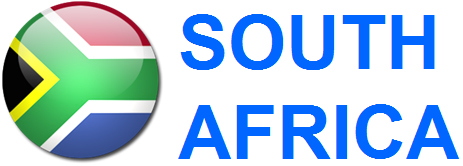
Tour guide: Aage Myhre
aage.myhre@VilNews.com
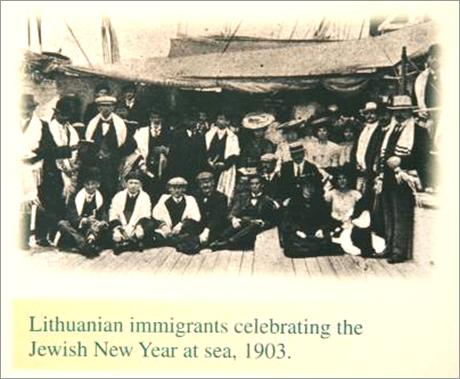
It is considered that around 90% of the approximately 80,000 Jews living in South Africa are of Lithuanian descent (the so-called Litvaks), which thus constitutes the largest pocket of Litvaks in the world! You are hereby invited to learn more about this unique Jewish community that still holds Lithuania alive in their hearts, museums and synagogues.
- Bookmark :
- Digg
- del.icio.us
- Stumbleupon
- Redit it
- Posted by - (0) Comment
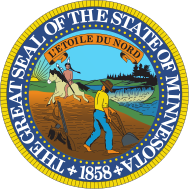
- Bookmark :
- Digg
- del.icio.us
- Stumbleupon
- Redit it
Lithuania in Minnesota
- Posted by - (0) Comment
![]()
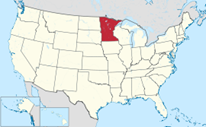
Lithuanian Americans in Minnesota first met in the summer of 1990 with Latvians and Estonians on Summit Avenue (in Saint Paul, Minnesota) by the Governor's mansion to demonstrate for freedom of the Baltic States during the visit of Gorbachov to MN. George Jace and Tomas Markvaldas wrote the article in the St. Paul Press and Minnapolis Tribune calling Lithuanians to come to the demonstration and to send us their names and addresses.
The first organizational meeting of a small group of Lithuanian-Americans met at the home of George and Mary Jace in Hopkins, MN on January 24, 1991.
A new organization called the Lithuanian-American Community of Minnesota was established. The first meeting of all Lithuanian-Americans of Minnesota was held Thursday, February 7, 1991 at 7:00 PM in a conference room of the Hopkins City Hall. Forty people attended, among them two agricultural exchange students from the U. of MN. The exchange students were Algirdas Vosilius and Mindaugas Bubliauskas. Also a Latvian representative was present. Officers were elected. Tom Baltutis was elected as President, Kestutis Tautvydas as Vice-President, Milda Arlauskas as Secretary, Marcia Hansen as Treasurer, and Birute Tautvydas as the chairperson of the cultural committee, etc. The steering committee members were Tom Baltutis, Kestutis and Birute Tautvydas, Leo and Liana Raudys, Milda Arlauskas, Rick Vaicius, Tomas Markvaldas, and Marcia Hansen. Feb 16th, 1991 we held a commemorative demonstration for Lithuania's Independence on the steps of the MN Capital building, and at the end of April we had our first display booth at the Festival of Nations.
On October 30, 1991 the members of LAC of MN voted to become affiliated with the Lithuanina American Community, Inc. By-laws were written and approved by the members. We had a fall picnic at the farm of Gintautas and Debra Naujokas and held the first Kucios event at Christ the King Church Hall in south Minneapolis in December. We also published a newsletter; Volume1, No. 1 which came out on March 5th, 1991.
Respectfully submitted,
Kes Tautvydas
This was not the first time that Lithuanians have organized a community in Minnesota. By 1922 the influx of Lithuanian immigrants into Minnesota had reached a point where the Twin Cities Lithuanian American Society was formed. It was a very active society, but after almost five decades the original volunteers were becoming too old to be very active and there were not enough new members who were willing to volunteer. The Society was disbanded in 1970. A review of the Society and its activities was presented by XXX at the LACMN’s 2007 Independence Day event.
- Bookmark :
- Digg
- del.icio.us
- Stumbleupon
- Redit it
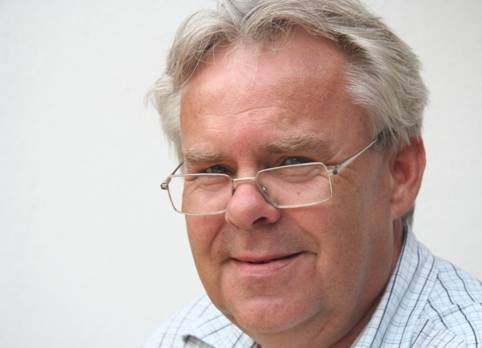
Norwegian Gunnvald Laukhammer, the main person behind the success of Lido Marine,
is not exactly thrilled with the way the Lithuanian authorities often are acting.
LIDO Marine is a Norwegian owned Lithuanian company, established originally under the name Lauremija in 2002, with roots in the maritime business back to 1977 and as own firms since 1986. The company's founder and general director, Gunnvald Laukhammer, has long experience in building and contracting, ship interior outfitting, industrial insulation and ventilation systems in the Norwegian onshore and offshore industry.
By basing the company in the port city of Klaipeda, LIDO Marine has been able to take advantage of the wealth of experience in the ship building industry of the city. During post-war soviet times, Klaipeda was one of the major centres of ship repair and ship building for the Soviet shipping industry. Four major ship building yards and numerous related businesses operated in the city; even today Klaipeda is host to 43 ship-repair, building and technical services companies.
In 2006 the company also bought facilities in Kretinga, a town not far from Klaipeda, and established Baltic Marine Furniture to produce furniture and interiors to supply the mother company’s ship and offshore fitting operations.
LIDO Marine currently has a staff of around 75, mostly Lithuanians divided into teams of 5 to 30 people, who travel all over Europe (sometimes also in other parts of the world) to furnish ships and offshore platforms. Baltic Marine Furniture employs twelve persons at the factory in Kretinga.
The authorities do nothing to facilitate or help us
Gunnvald Laukhammer is not exactly thrilled with the way the Lithuanian authorities often are acting. "Sometimes I feel they are more eager to create problems than to help out," he says. "Take as an example that our company Baltic Marine Furniture now for a long period of time has tried to get permission to extend the furniture workshop building in Kretinga. But instead of welcoming new jobs and investments with open arms, the local authorities seem to do what they can to thwart us, and we still have not received a building permit for a rather simple building extension, on our own land, after about two years of waiting. Now another winter may come before we can start building," he says.
Gunnvald is not overexcited when he talks about the many bureaucrats and politicians he thinks Lithuania has too many of.
"I simply no longer allow myself to get annoyed at how poorly the systems in this country often works," he says in his laconic, Western-Norwegian, manner.
"It is, however, strange to see," he says, "that an investor and export company like ours is getting no support or help from the local Lithuanian authorities. I feel, on the contrary, that they sometimes are attempting to cheat and take unfair advantage of us and other foreign companies here."
“For a company like ours, maybe not so large but still engaged in important export-oriented industry, bringing value to the country in terms of wages, taxes, purchase of equipment /materials and trade with other local business, etc., etc., the authorities should exercise benevolence to give us best possible conditions to ensure that companies like ours can evolve as quickly as possible. They should not create unnecessary delays and obstacles. We all loose on that.”
What should Klaipeda focus on for the years to come?
Gunnvald Laukhammer came to Klaipeda first time 14 years ago. It was during this first visit that he met Džiuginta, the woman who eventually became his wife and moved with him to the Norwegian west coast, where their two boys Eivin and Simon were born. In 2003 the family moved to Klaipeda and has lived here ever since.
“That was a period of decline in the construction of new vessels in Norway, while in Lithuania it was at that time generally many opportunities. And such opportunities are still existing here. We also thought of our children's upbringing and the opportunities this country in the future could offer. Therefore, we chose to move here eight years ago.” tells Gunnvald.
He has, in other words, a good basis for comparing Norway and Lithuania, and I asked him what he thinks Klaipeda region should pursue in the future.
"Tourism," he replies immediately. "The coast here in Lithuania is a real gem that too few tourists still have discovered. But the government must do more to facilitate - with better infrastructure and a more comprehensive range of accommodation, entertainment etc., as found in Western Europe."
“In addition, one must focus on things that are natural for this region and which is already available, like the maritime sector.”
“Agriculture should continue to be a priority. Lithuania has large agricultural acreage, and in a time of rising food prices the country should go for their own food production rather than imports. Export of food products to other populous countries such as Asia should also be explored possibilities for.”
“It is export-oriented industry that creates value, while imports represent drain of money. Norway has exported more goods and services than those imported, and consequently the nation has now money in the bank, a good social security system and standard of living for its citizens.”
“Many countries in Europe have lost much of its industry and we are now seeing the results of such a policy. The world countries that now succeed are those that have received industry the West has not protected and cared enough about.”
“The most important in all business operations is to think long term, demonstrate stability, quality/service and reliability.”
The basketball players understand how to think collectively
“How do you see the situation that now occurs due to the huge wave of emigration from Lithuania?”
“It is regrettable that too many "young" people leave the country. Some for a period, others for good. It was these people who should be the country's future, as they are some of the most creative and best workers Lithuania has fostered.”.
“They were the ones who in the future should develop, build and run the country. This migration will be a bigger and bigger problem that politicians must now approach in earnest. What do we do, how do we act, how do we create confidence so that people after leaving school with qualifications, will have faith in the future and wish to remain in their home country?”
Lithuania is among the best basketball nations in the world. Because these young sportsmen understand how to think collectively. Such thinking should also be implemented into all other relationships in the Lithuanian society. Today’s situation encourages too much selfishness where each individual is only self concerned. Just being able to smile at each other in everyday life should not cost so much energy, you would think.”
“Lithuania is a small country, and it should not represent too much trouble to get to the attitudes change, if there is an real will to do so.”
“And, again, to give and receive trust as well as think collectively are essential elements to success, in my opinion.”
Gunnvald again shrugs his shoulders...
They have dug up our street four times in one year!
I did this interview with Gunnvald Laukhammer in his private home in the Klaipede district of Melnrage, a few kilometres north of the city centre. Getting there was easy, until a few hundred meters remained. What then met me, didn’t look much like a street at all, more like a ditch or a dry riverbed covered with crushed stone and manhole covers that towered a foot or more over the ground level in an uneven pattern along what once was a street. I was happy that it wasn’t dark outside. That could have caused fatal consequences for the car I drove.
Arriving 'in security' at Gunnvald’s he tells me that the municipality dug up the street more than a year ago to lay down new pipes for water, drains and sewers, and eventually cables for street lights. The plan was also to cover the road with cobblestones.
"But now this farce of a road story has gone on for more than one year, and during that period, the municipality has managed to dig up the street four times," Gunnvald tells with an ironic grin.
"The authorities in Lithuania must learn to manage the taxpayers' money in a much better way. Our road problem is just another example of how badly the authorities here are wasting the people’s money because of poor planning and coordination,” he says.
“If you have little money, which is understandable, one should consider alternative solutions, not choose the most expensive ones to the delight of some and chagrin of everyone else - solutions other countries, with far better economy, cannot afford. In short, the money one has available should be to the benefit for most possible people.”
With a certain hope in his voice that he and his family will not have to experience one more winter with a ditch instead of a street outside their Melnrage home, our little interview has come to an end...
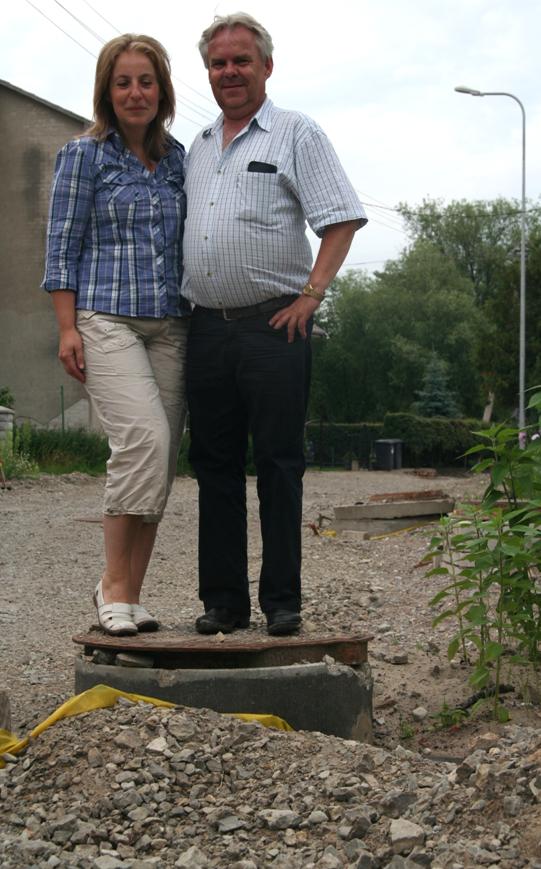
Džiuginta and Gunnvald Laukhammer on one of the manhole covers sticking more than
a foot up from what once was the street outside their home in Melnrage, Klaipeda.
- Bookmark :
- Digg
- del.icio.us
- Stumbleupon
- Redit it
- Posted by - (0) Comment

USA and the relationship between the Lithuanian-Americans and their
homeland will be substantially covered in our VilNews editions during April and May 2012. Feedback from you, dear readers, is still wanted!
Go to SECTION 11 – LITHUANIA IN THE WORLD
Click on the READ buttons below to access the articles:
1 |
 |
Healing the wounds between
|
| 1.1 |  |
“I am very pleased to see this intra-Lithuanian forum open up and give vent to these prejudices we have about each other” |
2 |
 |
The President and the World-Lithuanians on collision course? |
3 |
 |
A native American
|
| 3.1 |  |
“There are significant cultural differences between LT-Americans and Lithuanians that grew up in the Soviet Lithuania” |
| 3.2 |  |
“My impression is that many of us Lithuanian-Americans have thought about the possibility of retiring in Lithuania” |
4 |
 |
The Knights of Lithuania keep on fighting |
5 |
 |
Lithuanian ‘egg art’ on the Martha Stewart Show |
6 |
 |
Hordes of Lithuanians came to Pennsylvania to work in coal mines |
7 |
 |
Son of a Lithuanian coal miner |
8 |
 |
Easter and more –
|
9 |
 |
We will never forget or underestimate the role of Lithuanian Americans in our struggle for independence |
10 |
 |
Alexander & Ruth Bielaski
|
10 |
 |
TIME 1951: "The most invulnerable, most unfirable, most feared and most admired career woman in the U.S. Government." |
11 |
 |
Cultivating Lithuanian
|
12 |
 |
LT-American filmmaker
|
13 |
 |
Vanda’s story:
|
14 |
 |
Chicago 26 – 28 April:
|
15 |
 |
LT sportsmen in USA |
16 |
 |
Lithuanian-American Johnny Podres (1932-2008):
|
17 |
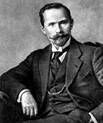 |
Antanas Smetona:
|
18 |
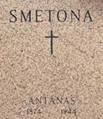 |
No flowers for Smetona |
19 |
 |
US-Lithuanian
|
20 |
 |
Would you like to join me to the Lithuanian Cultural Garden in Cleveland? |
21 |
 |
A visit to our Homeland
|
22 |
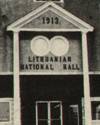 |
Saluting the Lithuanians of Brockton, Massachusetts |
23 |
 |
Boston, Massachusetts,
|
24 |
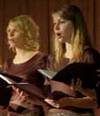 |
Boston Lithuanian Cultural "Subatvakaris" - 50 years |
25 |
 |
US-Lithuanian Jews
|
26 |
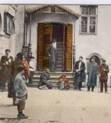 |
“Why do you love
|
27 |
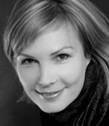 |
Ona Šimaitė:
|
28 |
 |
Rūta Šepetys and
|
29 |
 |
What defines Lithuania?
|
30 |
 |
How Chicago became
|
| 30.1 | 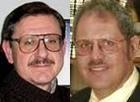 |
As vast as the waves of Lithuanian immigrants who crossed the ocean to start new lives thousands of miles from their native land |
31 |
 |
No LT leaders called
|
32 |
 |
Sending e-mail to LT is like sending it to the black hole of the universe |
33 |
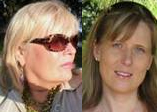 |
Should there be gay
|
34 |
 |
Global Baltic ‘family
|
35 |
 |
Nazi – not Nazi? |
36 |
 |
Juozas Ambrazevicius-
|
37 |
 |
Good morning,
|
38 |
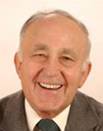 |
U.S.-Nordic-Baltic cooperation |
39 |
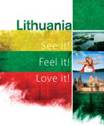 |
Message to all U.S.-Lithuanians:
|
- Bookmark :
- Digg
- del.icio.us
- Stumbleupon
- Redit it
- Posted by - (1) Comment

USA and the relationship between the Lithuanian-Americans and their homeland was substantially covered in our
VilNews editions during April and May 2012. Feedback from you, dear readers, is still wanted!
Click on the READ buttons below to access the articles:
1 |
 |
Healing the wounds between
|
| 1.1 |  |
“I am very pleased to see this intra-Lithuanian forum open up and give vent to these prejudices we have about each other” |
2 |
 |
The President and the World-Lithuanians on collision course? |
3 |
 |
A native American
|
| 3.1 |  |
“There are significant cultural differences between LT-Americans and Lithuanians that grew up in the Soviet Lithuania” |
| 3.2 |  |
“My impression is that many of us Lithuanian-Americans have thought about the possibility of retiring in Lithuania” |
4 |
 |
The Knights of Lithuania keep on fighting |
5 |
 |
Lithuanian ‘egg art’ on the Martha Stewart Show |
6 |
 |
Hordes of Lithuanians came to Pennsylvania to work in coal mines |
7 |
 |
Son of a Lithuanian coal miner |
8 |
 |
Easter and more –
|
9 |
 |
We will never forget or underestimate the role of Lithuanian Americans in our struggle for independence |
10 |
 |
Alexander & Ruth Bielaski
|
10 |
 |
TIME 1951: "The most invulnerable, most unfirable, most feared and most admired career woman in the U.S. Government." |
11 |
 |
Cultivating Lithuanian
|
12 |
 |
LT-American filmmaker
|
13 |
 |
Vanda’s story:
|
14 |
 |
Chicago 26 – 28 April:
|
15 |
 |
LT sportsmen in USA |
16 |
 |
Lithuanian-American Johnny Podres (1932-2008):
|
17 |
 |
Antanas Smetona:
|
18 |
 |
No flowers for Smetona |
19 |
 |
US-Lithuanian
|
20 |
 |
Would you like to join me to the Lithuanian Cultural Garden in Cleveland? |
21 |
 |
A visit to our Homeland
|
22 |
 |
Saluting the Lithuanians of Brockton, Massachusetts |
23 |
 |
Boston, Massachusetts,
|
24 |
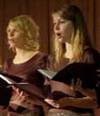 |
Boston Lithuanian Cultural "Subatvakaris" - 50 years |
25 |
 |
US-Lithuanian Jews
|
26 |
 |
“Why do you love
|
27 |
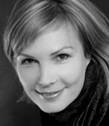 |
Ona Šimaitė:
|
28 |
 |
Rūta Šepetys and
|
29 |
 |
What defines Lithuania?
|
30 |
 |
How Chicago became
|
| 30.1 |  |
As vast as the waves of Lithuanian immigrants who crossed the ocean to start new lives thousands of miles from their native land |
31 |
 |
No LT leaders called
|
32 |
 |
Sending e-mail to LT is like sending it to the black hole of the universe |
33 |
 |
Should there be gay
|
34 |
 |
Global Baltic ‘family
|
35 |
 |
Nazi – not Nazi? |
36 |
 |
Juozas Ambrazevicius-
|
37 |
 |
Good morning,
|
38 |
 |
U.S.-Nordic-Baltic cooperation |
39 |
 |
Message to all U.S.-Lithuanians:
|
- Bookmark :
- Digg
- del.icio.us
- Stumbleupon
- Redit it
- Posted by - (0) Comment

- Bookmark :
- Digg
- del.icio.us
- Stumbleupon
- Redit it
- Posted by - (2) Comment
JAMES ANDREW CLARKE:
Irish horse farmer who succeeded in real estate and settled in Klaipėda

James A. Clarke (34) with wife Marina (27) and son Daniel (2).
It is a very likeable couple sitting in the sofa in front of me here in the Radisson Blu Klaipeda this Saturday morning. Young, smart, successful people who have chosen Klaipeda as their hometown and base for the business activities, James has built up here over the last few years. Their two-year-old son Daniel is running around, full of energy. Luckily I manage to snap a quick family photo the one second he sits quietly with his parents.
James was only 21 years old when he came to Klaipeda and Lithuania for the first time. The building engineer who had grown up in an Irish family farm had come here to buy horses on behalf of his uncle, Ireland's largest horse-farmer.
Something out here at the Lithuanian coast must have caught James' interest and curiosity even then, so after having travelled around and seen more of the world, he came back here in 2003. And now the business got serious.
That very same year, BNTP (Baltic Real-Estate Developments) was established in Klaipeda, where it successfully developed the first modern business park in Lithuania - Klaipeda Business Park. Since then BNTP has expanded its portfolio through developments and acquisitions to include commercial centres and land plots in Lithuania and Latvia.
James has been very active and successful in his real estate endeavours since the start-up eight years ago.

BNTP has built up a solid business reputation and got a proven track record of successful developments
and investments since the start-up in 2003. See www.bnt.lt for additional details about the company.

BNTP’s ‘business park’ in the Klaipeda Free Economic Zone.
"It was probably a combination of caution, long-term planning and luck that made us less harder hit by the economic downturn than many others," says James, and mentions that he was particularly pleased to have sold one of the firm's major real estate projects just before the crisis hit in 2008.
Luck was also with James when he six years ago met the then 21 year old Marina. She was at that time a student of business administration at the LCC International University in Klaipeda, a well recognized teaching institution established in 1991 by a joint venture of Lithuanian, Canadian and American foundations. LCC has over those 20 years distinguished itself in the region by offering a unique, future-oriented style of education and an interactive academic environment.
Similar to many other students in Lithuania, Marina worked in a restaurant beside the studies. And it was in this restaurant that Amor one lovely evening, six years ago, decided to make a couple of James and Marina.
The love relationship between them developed over the months and years that followed, with marriage and now two-year-old Daniel as result. Daniel shall also soon become big brother to a new baby the couple is expecting later this summer...
The family also have plans ready to build their new home in Klaipeda, a villa on a hilltop overlooking the Dane River and an attractive 18-hole golf course that now has been developed a few kilometres from the city centre.
James' interests in life are, however, stretching beyond family and business. Since 2004 he has been the man behind a charity football tournament for children in the territory of his Klaipeda Business Park the last weekend of August every year. Last year 30 000 Lt was raised during the event, and the money was donated to the non-governmental non-profit public organization "The Centre for Information and Support for Large Families".
It is no big secret that football is one of James' major interests in life, and his next big plan in this respect is to unite Klaipeda's two football teams into one, thereby raising the professional level and get the team approved and activated in accordance with FIFA rules. He also wants to establish a football school for 600 pupils, and wants to build a brand new football stadium in Klaipeda.
And then there is a common concern that both James and Marina are urging for, namely to establish better kindergarten and primary school services in Klaipeda, preferably with an international flavour.
And when I see what this young couple already has managed to achieve, I am convinced that Klaipeda in the coming years will experience a small revolution and a lot of new, positive growth. New optimism is already in the air...
- Bookmark :
- Digg
- del.icio.us
- Stumbleupon
- Redit it
VilNews e-magazine is published in Vilnius, Lithuania. Editor-in-Chief: Mr. Aage Myhre. Inquires to the editors: editor@VilNews.com.
Code of Ethics: See Section 2 – about VilNews. VilNews is not responsible for content on external links/web pages.
HOW TO ADVERTISE IN VILNEWS.
All content is copyrighted © 2011. UAB ‘VilNews’.

 Click on the buttons to open and read each of VilNews' 18 sub-sections
Click on the buttons to open and read each of VilNews' 18 sub-sections 



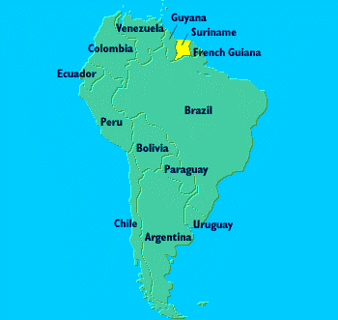


















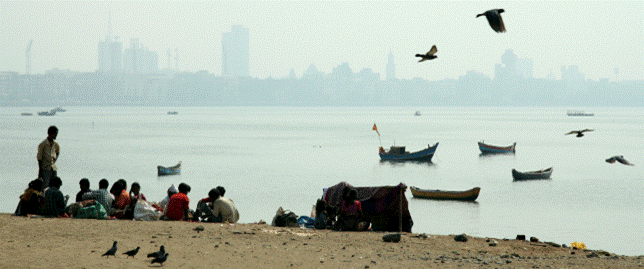
























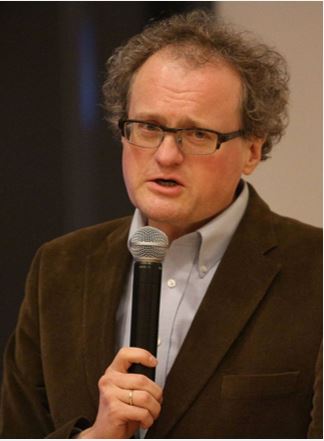

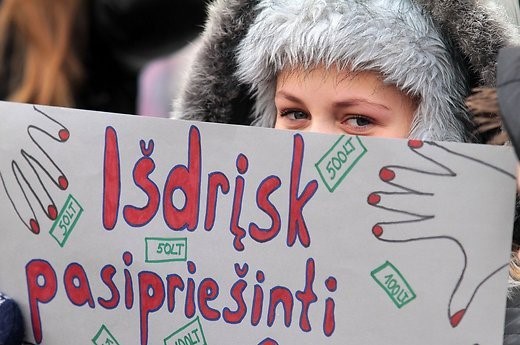


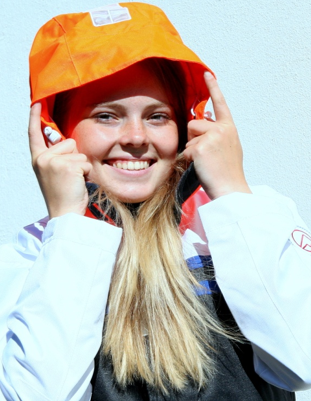
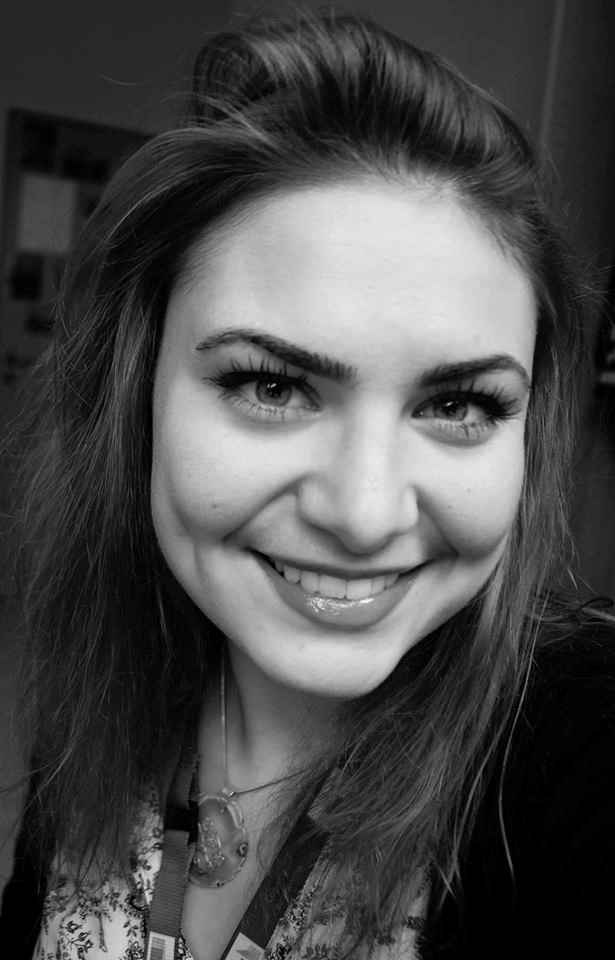

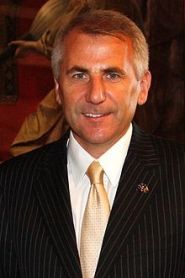
.jpg)
